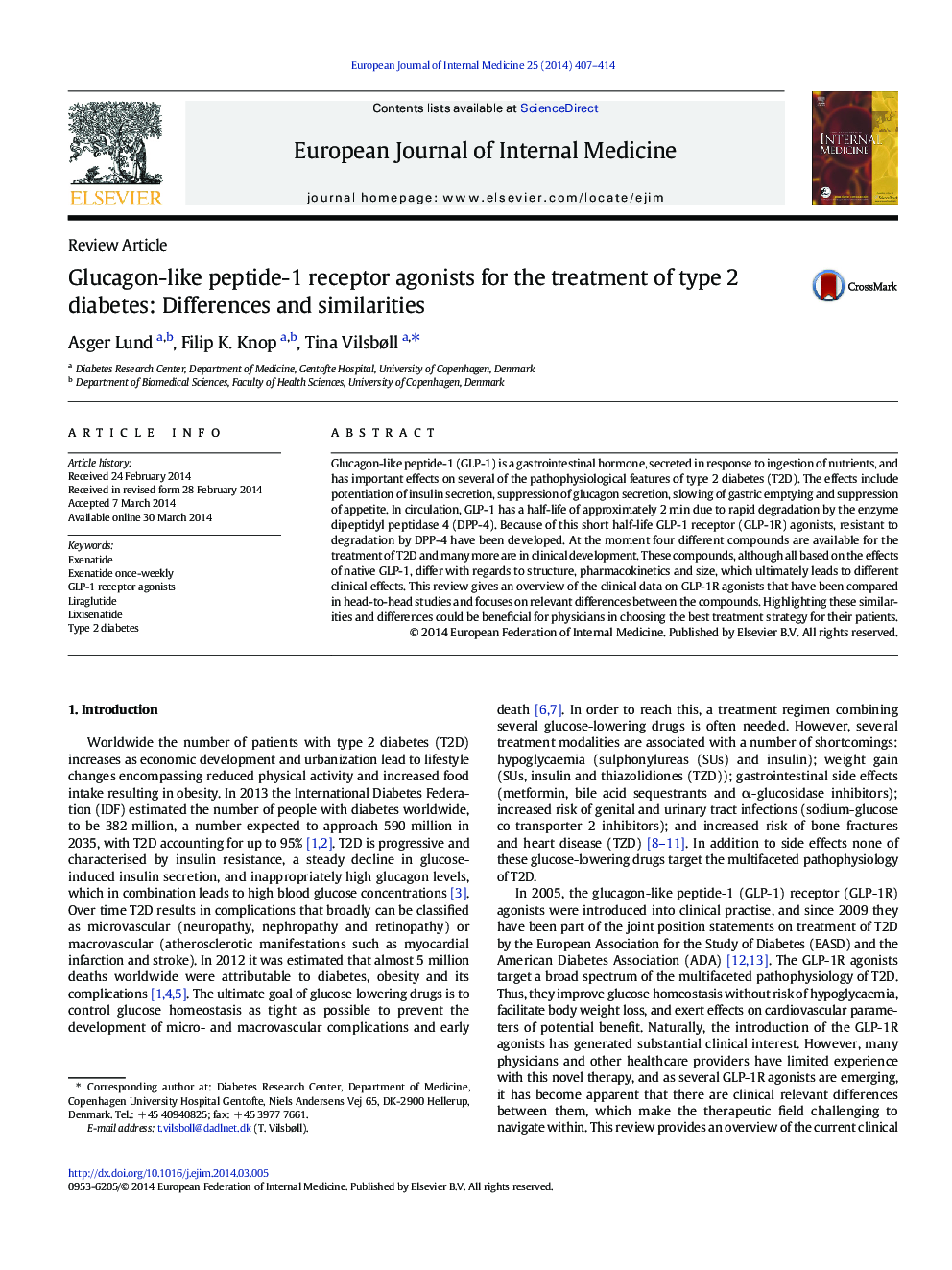| کد مقاله | کد نشریه | سال انتشار | مقاله انگلیسی | نسخه تمام متن |
|---|---|---|---|---|
| 3466326 | 1596555 | 2014 | 8 صفحه PDF | دانلود رایگان |
• GLP-1R agonists address several of the pathophysiological features of T2D
• GLP-1R agonists are different based on their structure, pharmacokinetics and size
• Differences between the GLP-1R agonists lead to different clinical effects
• Long-term effects of and potential differences between GLP-1R agonists are awaited
Glucagon-like peptide-1 (GLP-1) is a gastrointestinal hormone, secreted in response to ingestion of nutrients, and has important effects on several of the pathophysiological features of type 2 diabetes (T2D). The effects include potentiation of insulin secretion, suppression of glucagon secretion, slowing of gastric emptying and suppression of appetite. In circulation, GLP-1 has a half-life of approximately 2 min due to rapid degradation by the enzyme dipeptidyl peptidase 4 (DPP-4). Because of this short half-life GLP-1 receptor (GLP-1R) agonists, resistant to degradation by DPP-4 have been developed. At the moment four different compounds are available for the treatment of T2D and many more are in clinical development. These compounds, although all based on the effects of native GLP-1, differ with regards to structure, pharmacokinetics and size, which ultimately leads to different clinical effects. This review gives an overview of the clinical data on GLP-1R agonists that have been compared in head-to-head studies and focuses on relevant differences between the compounds. Highlighting these similarities and differences could be beneficial for physicians in choosing the best treatment strategy for their patients.
Journal: European Journal of Internal Medicine - Volume 25, Issue 5, June 2014, Pages 407–414
